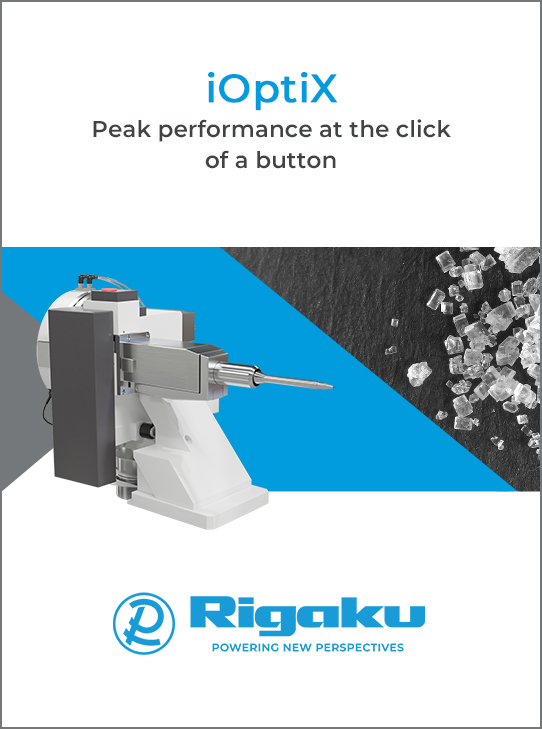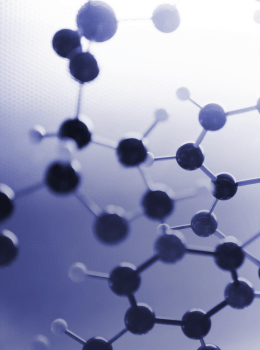


Meeting report
72nd Annual Denver X-ray Conference
![thumbnail [thumbnail]](https://www.iucr.org/__data/assets/image/0003/157242/thumbnail.jpg)
DXC workshops
The technical program began with 16 half-day tutorial workshops held on Monday and Tuesday of conference week. Topics were categorized as XRD, XRF or 'special topic', and focused on both beginner and advanced levels. In total, 45 specialists were invited to participate as workshop instructors, and many provided handouts that were posted on a private website for attendees only. Topics included the following:
-
What the APS Upgrade will bring to X-ray Analysis – Parts I & II
-
Cultural Heritage
-
Basic to Intermediate XRD
-
Basic XRF
-
In situ Battery Measurements
-
Quantitative XRF
-
Sample Preparation for XRF
-
Intro to GSAS-II
-
Advanced Topics in GSAS-II
-
Texture
-
Micro XRF
-
XRF of Layered Structures
-
XRD Methods for Complex Multi-Phase Identification
-
How to Get the Best from Your Handheld XRF Spectrometer
-
XRF Trace Analysis
Plenary Session and DXC awards
The Plenary Session, Energy Storage, was held on Wednesday morning as the opening session for the oral talks that were presented during the next three days of conference week. Scott Misture (Alfred University, NY, USA) chaired the plenary, which began with an awards presentation.
The Barrett Award, given biennially to recognize outstanding contributions to the field of powder diffraction, was presented to Ashfia Huq (Sandia National Laboratories, Livermore, CA, USA). Dr Huq received the award for her commitment to and leadership in the advancement of spallation neutron powder diffraction and for her service to the neutron powder diffraction community.
![[figure1]](https://www.iucr.org/__data/assets/image/0004/157243/image1.jpg) Barrett Award winner Ashfia Huq (left; Sandia National Laboratories, Livermore, CA, USA) pictured with Conal Murray (IBM Thomas J. Watson Research Center, Yorktown Heights, NY, USA).
Barrett Award winner Ashfia Huq (left; Sandia National Laboratories, Livermore, CA, USA) pictured with Conal Murray (IBM Thomas J. Watson Research Center, Yorktown Heights, NY, USA).
The Jenkins Award, given biennially to recognize scientists who exhibit lifetime achievement in the advancement of the use of X-rays in materials analysis, was presented to Tim Elam (University of Washington, Seattle, WA, USA). Dr Elam received the award for his contributions to X-ray fluorescence spectrometry in the development of instrumentation and methods of X-ray analyses in challenging environments, including the PIXL micro-XRF spectrometer on the Mars rover Perseverance. The award also recognized his many contributions to educating and teaching others in the field of X-ray spectroscopy.
![[figure2]](https://www.iucr.org/__data/assets/image/0005/157244/image2.jpg) Jenkins Award winner Tim Elam (left; University of Washington, Seattle, WA, USA) pictured with Tim Fawcett (ICDD, Newtown Square, PA, USA).
Jenkins Award winner Tim Elam (left; University of Washington, Seattle, WA, USA) pictured with Tim Fawcett (ICDD, Newtown Square, PA, USA).
Also presented during the DXC Plenary Session was the 2022 ICDD Hanawalt Award, recognizing distinguished, recent work in the field of powder diffraction. The Hanawalt Award was presented to Karena Chapman (Stony Brook University, NY, USA). Dr Chapman received the award for her contributions to developing X-ray diffraction capabilities in the study of challenging materials problems in sustainable energy and environmental remediation.
![[figure3]](https://www.iucr.org/__data/assets/image/0006/157245/image3.jpg) Hanawalt Award winner Karena Chapman (left; Stony Brook University, NY, USA) pictured with Tom Blanton (ICDD, Newtown Square, PA, USA).
Hanawalt Award winner Karena Chapman (left; Stony Brook University, NY, USA) pictured with Tom Blanton (ICDD, Newtown Square, PA, USA).
Eight outstanding young scientists received the 2023 Robert L. Snyder Student Grant Award. The awardees and the works they presented at the conference were as follows:
-
Dana Alramahi (Illinois Institute of Technology, Chicago, IL, USA): High Entropy Oxide Tungsten Bronzes as Anodes for Lithium Ion Batteries, XRD Poster Session
- Karen Castañeda Marin (Illinois Institute of Technology, Chicago, IL, USA): Synthesis and Characterization of MoP Nanoparticles Used As a Catalyst in CO2 Reduction Reaction, XRF Poster Session
-
Sven Hampel (Clausthal University of Technology, Germany): Successful Picoliter Printing of 65 Elements for TXRF Analysis and Related Methods, XRF Poster Session; Investigation of the Genesis of Spinel Solid Solutions in Recycling Slags, Energy Storage and Harvesting Session; and Determination of Diffusion Coefficients of Vanadium Inside Polymer Electrolyte Membranes, General XRF Session
-
Benjamin Hulbert (University of Illinois at Urbana Champaign, IL, USA): Specimen Displacement Correction for Powder X-ray Diffraction in Debye-Scherrer Geometry with a Flat Area Detector, General XRD Session, and Crystal Structure Solution and Thermal Expansions of CaZr4(PO4)6 and SrZr4(PO4)6, XRD Poster Session
-
Hao Lin (Illinois Institute of Technology, Chicago, IL, USA): Exploring the Structural Evolution in Li-Rich Layered Materials via Operando XRD, XRD Poster Session
-
Benard Lawer Patawah (Illinois Institute of Technology, Chicago, IL, USA): XAS Study Local Atomic Environment Mn-Edge in MnOxGO Nanocomposites as Air-Cathode for Metal-Air Battery Application, XRF Poster Session
-
Himihami Mudiyanselage Senevirathna (Illinois Institute of Technology, Chicago, IL, USA): In Situ EXAFS Study on Pd–Ni(OH)2 during Electrocatalytic CO2 Reduction Reaction, XRF Poster Session
- Philipp Ziegler (TU Wien, Austria): Tackling Low-Z Element Quantification with TXRF, XRF Poster Session.
![[figure4]](https://www.iucr.org/__data/assets/image/0007/157246/image4.jpg) 2023 Robert L. Snyder Student Grant Award winners.
2023 Robert L. Snyder Student Grant Award winners.
Following the awards presentation, the Plenary Session continued with three fascinating talks by keynote speakers Y. Shirley Meng (Argonne National Laboratory, Lemont, IL, USA), Karena Chapman (Stony Brook University, NY, USA) and Will Chueh (Stanford University, CA, USA). Dr Meng presented the talk Designing Better Materials for Future Batteries. Next was Dr Chapman’s presentation on X-ray Visions: Operando Insights into Functional Energy Materials. Lastly, Dr Chueh presented on Dynamic Electrochemical Phenomena at the Mesoscale. The session was very well attended and offered great insight into future advancements in science and technology.
![[figure5]](https://www.iucr.org/__data/assets/image/0008/157247/image5.jpg) 2023 Plenary Speakers (left to right) Karena Chapman, Y. Shirley Meng, Scott Misture (session chair) and Will Chueh.
2023 Plenary Speakers (left to right) Karena Chapman, Y. Shirley Meng, Scott Misture (session chair) and Will Chueh.
Special sessions
From Wednesday afternoon through Friday morning, 16 half-day oral sessions were held. Over 100 presentations were organized in the oral sessions, with 30 presentations given by invited speakers, experts in their respective fields. Topics included the following:
-
New Developments in XRD and XRF Instrumentation
-
Imaging
-
Stress and Texture Analysis
-
Trace Analysis
-
Machine Learning Techniques in X-ray Analysis – Parts I & II
-
Synchrotron Applications in XRD
-
Industrial Applications of XRD
-
General XRF
-
Industrial Applications of XRF
-
General XRD
-
Quantitative Analysis of XRF
-
Energy Storage and Harvesting
-
Cultural Heritage
-
Applications of Rietveld Analysis
-
Micro XRF and Synchrotron Applications
Poster sessions
Posters were presented on Monday and Tuesday evenings during the XRD and XRF Poster Sessions. Two E-poster stations were also set up in the exhibit hall. Attendees were given the opportunity to preview electronic copies of the posters at the E-poster stations or through the mobile app Whova. Respected judges chose the best posters, and the competition was strong.
Ultimately, the following presenters were named winners:
XRD Best Poster Awards
- James Kaduk, T. Ens, N. Boaz (North Central College, Naperville, IL, USA), T. Blanton and A. Dosen (ICDD, Newtown Square, PA, USA) for their work: Crystal Structures of Large-Volume Commercial Pharmaceuticals
- Benjamin S. Hulbert, J. E. Brodecki and W. M. Kriven (University of Illinois at Urbana-Champaign, IL, USA) for their work: Crystal Structure Solution and Thermal Expansions of CaZr4(PO4)6 and SrZr4(PO4)6
- Dana Alramahi, O. Marques and C. Segre (Illinois Institute of Technology, Chicago, IL, USA) for their work: High Entropy Oxide Tungsten Bronzes as Anodes for Lithium Ion Batteries.
![[figure6]](https://www.iucr.org/__data/assets/image/0009/157248/image6.png) XRD Poster Session Award winners (left to right) Ercan Cakmak (poster judge), James Kaduk, Dana Alramahi, Benjamin S. Hulbert and Tom Watkins (poster judge).
XRD Poster Session Award winners (left to right) Ercan Cakmak (poster judge), James Kaduk, Dana Alramahi, Benjamin S. Hulbert and Tom Watkins (poster judge).
XRF Best Poster Awards
- Ruthmara Corzo (NIST, Gaithersburg, MD, USA), J. Stallworth and T. Gluodenis (Lincoln University, PA, USA) for their work: Elemental Characterization of 3D-printed Polymers Using Micro X-ray Fluorescence Spectrometry for Forensic Applications
- Sven Hampel, F. Sand, U. E. A. Fittschen (Clausthal University of Technology, Germany) and G. Pepponi (Fondazione Bruno Kessler, Italy) for their work: Successful Picoliter Printing of 65 Elements for TXRF Analysis and Related Methods
- Karen A. Castañeda, I. Senevirathna, C. Segre and M. Asadi (Illinois Institute of Technology, Chicago, IL, USA) for their work: Synthesis and Characterization of MoP Nanoparticles Used as a Catalyst in CO2 Reduction Reaction.
![[figure7]](https://www.iucr.org/__data/assets/image/0010/157249/image7.png) XRF Poster Session Award winners (left to right) Ruthmara Corzo, Karen A. Castañeda, Diane Eichert (poster judge), Sven Hampel, Maggi Loubser (poster judge) and Poulami Dutta (poster judge).
XRF Poster Session Award winners (left to right) Ruthmara Corzo, Karen A. Castañeda, Diane Eichert (poster judge), Sven Hampel, Maggi Loubser (poster judge) and Poulami Dutta (poster judge).
We would like to thank two of our exhibitors for sponsoring additional Best Poster Awards during the XRF Poster Session: Amptek, Inc. and XOS.
Amptek Award for Best Student XRF Poster
Alyssa Tovar and M. Schmeling (Loyola University Chicago, USA) for their work: Environmental Sampling of Chicago Industrial Corridors.
XOS Innovation Award™
First place: Donald Windover (NIST, Gaithersburg, MD, USA) and K. J. Kim (KRISS, Daejeon, Korea) for their work: Thickness Monitoring Using X-ray Fluorescence in Hafnia Films
Runner up: Sven Hampel, F. Sand, U. E. A. Fittschen (Clausthal University of Technology, Germany) and G. Pepponi (Fondazione Bruno Kessler, Italy) for their work: Successful Picoliter Printing of 65 Elements for TXRF Analysis and Related Methods.
Exhibits and sponsorships
The exhibition hall accommodated 36 companies with displays of products and services for the X-ray community. See a complete listing of exhibitors and their product descriptions in the 2023 Onsite Program. The Denver X-ray Conference is very appreciative of their support this year.
Many of the exhibitors also supported the conference as sponsors, including Amptek, Inc.; Anton Paar; Bruker; ICDD; KETEK GmbH; Materials Data; Petrick GmbH; Rigaku Americas; Xenocs and XOS. The generosity of our sponsors helps to keep attendee costs low and the quality of the conference high. We are grateful for their support!
Website and proceedings
To view the complete DXC Program, please visit the ‘Past DXC’ page of the conference website, located under the ‘About DXC’ tab. The conference proceedings, Advances in X-ray Analysis, Volume 67, will be published in the summer of 2024. Select papers will also be published in the Powder Diffraction journal. Please also visit the ‘Resources’ tab on the ICDD website for free full access to manuscripts published in Volumes 40–66 of Advances in X-ray Analysis.
The Conference Services team at ICDD would like to thank the many people who volunteered their time and efforts to organize this event. Members of the DXC Organizing Committee, session chairs, workshop instructors, invited and contributed speakers, and exhibitors all played a role in bringing the community together again. Special thanks also to the attendees who joined us as well. The success of the event is attributed to each and every individual who participated, and we send our genuine thanks to all of you!
2024 Meeting
Save the date! DXC will return to Colorado, 5–9 August 2024, at The Westin Westminster, Westminster, CO, USA.
Copyright © - All Rights Reserved - International Union of Crystallography







